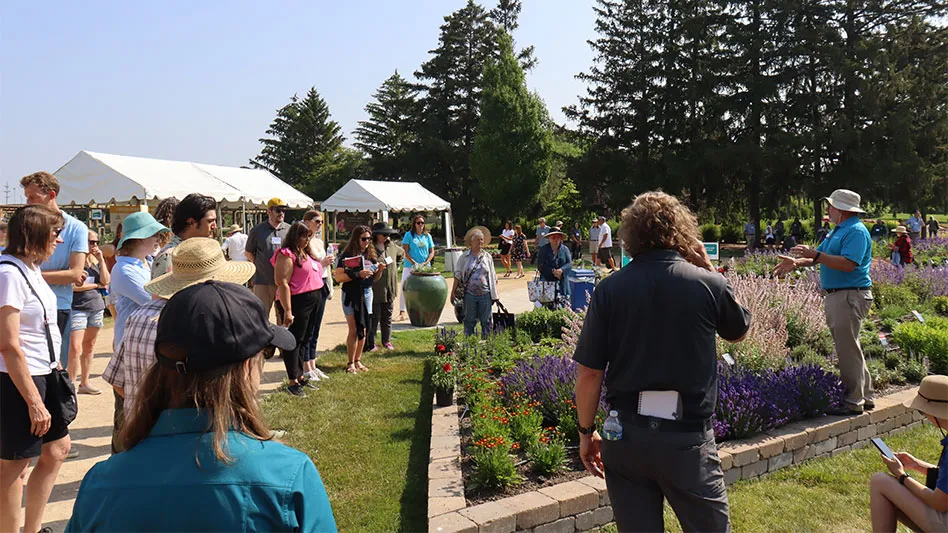

Uniformity is one of the most important aspects associated with containerized greenhouse crop production. Variation in plant size within any crop reduces quality and, in some cases, reduces the number of marketable plants.
In looking across a crop of containerized gerbera, there was a noticeable difference in plant size from the front of the growing block to the back. In walking to the back of the block, the pattern became clear: The edge of the crop had been grown too dry.
Several factors contributed to this problem. First, gerbera daisy can be more prone to drying down compared to other containerized crops simply due to the leaf morphology. The large, serrated leaves transpire more than other leaves. While this increased transpiration capacity helps keeps plants cooler, it also causes gerbera to use up substrate moisture more quickly.


But what became clear in looking at the pattern was that this was due to uneven irrigation. This scenario is possible in any irrigation system, be it overhead irrigation by hand, with a boom, or through sprinklers or subirrigation with flood trays or floors.
The edges of irrigation blocks tend to receive less water during irrigation events due to incomplete coverage. It could be because the edges can be the last plants to receive water and first to lose it on flood floors. For hand irrigation, far edges simply suffer from “short arm syndrome,” and for booms and overhead sprinklers, there may simply be less thorough coverage.
The plugs used for these plants had been treated with a plant growth retardant (PGR). Since they were brought in from a commercial supplier, the active ingredient and concentration were unknown. No excessive control was seen during finishing for the well-watered plants, but this likely exacerbated some of the growth suppression from the dry growing conditions.

Drying down in between crops is a non-chemical growth control strategy that works for many crops, including gerbera daisy. Restricting irrigation the plants are grown in and restricting substrate moisture inhibits unwanted or excessive plant growth. This technique is commonly used in vegetable bedding plants or transplants, as well as for some containerized flowering annuals.
Gerbera daisies are certainly able to withstand dry conditions. Their native environment consists of very dry summers and winters with infrequent precipitation. But the strategy of restricting moisture to control growth should be purposefully applied, not haphazardly tolerated.
Uniformity should be encouraged in every aspect of managing the growing environment and plant culture. From trays of 512 seedling plugs to 6-inch potted gerberas, monitoring substrate moisture and careful edge watering or “edging” can help improve quality and reduce shrinkage.

Explore the April 2023 Issue
Check out more from this issue and find you next story to read.
Latest from Greenhouse Management
- Landmark Plastic celebrates 40 years
- CropLife applauds introduction of Miscellaneous Tariff Bill
- Greenhouse 101 starts June 3
- Content Marketing Through Storytelling: Sharing Your Horticulture Brand’s Journey
- Proven Winners introduces more than 100 new varieties for 2025
- UF/IFAS researchers work to make beer hops a Florida crop
- CIOPORA appoints Micaela Filippo as vice secretary-general
- Passion grows progress





